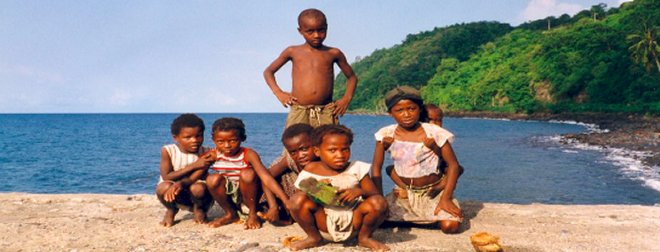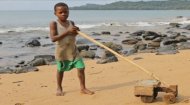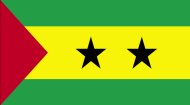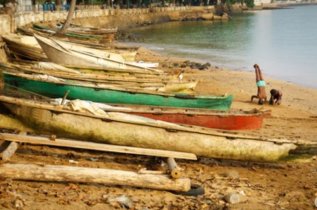|
São Tomé and Príncipe |
São Tomé and Príncipe |
São Tomé and Príncipe | São Tomé and Príncipe |

|
São Tomé and Príncipe's economic profile is historically reliant on agriculture, particularly cocoa production, which long formed the backbone of its colonial and post-independence economy. While cocoa remains a significant export, the nation has increasingly turned to tourism, leveraging its natural beauty and tranquillity as a draw for eco-tourists and those seeking an unspoiled tropical escape. The discovery of significant offshore oil reserves in the early 2000s sparked hopes of a transformative economic boom, yet the full potential of this sector remains largely untapped, with production slow to materialise. This is primarily because of internal tensions about how best to exploit the opportunities those discoveries provide with many concerned that what should be an island paradise will become a breeding ground for exploitative oil companies who will wreak environment disaster as they have done in the Niger Delta. The country faces challenges such as limited infrastructure, high external debt, and vulnerability to climate change impacts, all of which hinder its economic diversification and sustainable development efforts. The country relies for cocoa for 95% of its exports and uses that income to buy in food given that it cannot grow enough of its own food to support its population. In recent years its cocoa output has dropped due to droughts and mismanagement, however the government is actively focused on attracting foreign investment and developing a more resilient economy beyond its traditional revenues. The social profile of São Tomé and Príncipe is rich and diverse, woven from centuries of interaction between indigenous African populations and Portuguese settlers, as well as influences from other parts of Africa and Europe. Portuguese is the official language, but distinct Creole dialects such as Forro and Principense are widely spoken, reflecting the nation's unique cultural blend. The population of 240,254 (2025), is known for its hospitality and strong community bonds, often centred around family and local traditions. Education and healthcare access are ongoing priorities for the government, with continuous efforts directed towards improving living standards and human development indicators. Cultural expressions are vibrant, seen in their music, dance, and festivals, which often incorporate elements from both African and European traditions, contributing to a proud and distinct national identity. São Tomé and Príncipe is in 131st place out of 193 countries and territories in 2025 when ranked in terms of life expectancy, literacy, access to knowledge and the living standards of a country. Life expectancy is 70.1 years (2025) but São Tomé and Príncipe faces a significant poverty challenge, with estimates indicating that around 15.7% of the population lives below the poverty line, according to the World Bank. While urban poverty is higher than rural poverty, the country also grapples with multidimensional poverty, where individuals experience deprivations beyond income, such as in health, education, and living standards. Part of this poverty is down to the fact that many are engaged as as plantation workers reliant on the market economy to pay them without the opportunity to grow their own crops as they possess no land to do so. Today São Tomé and Príncipe is ranked in 12th place out of 54 African countries measured by the Ibrahim Index of African Governance and is considered a free country, with high freedom of speech, high political freedom and average economic freedom.
 |










